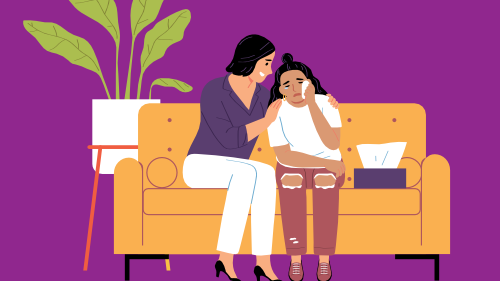EBPs in School Settings
Many CAPP projects reach youth in classroom settings, and because school staff and administration face many competing pressures, building a strong collaboration can be challenging.
But it's not impossible.
In this section, we provide strategies and tools to help providers create solid relationships with schools for the duration of the project.
Why Schools?
Implementing in a school setting has many advantages.
- Schools often (but not always) offer a better chance at consistent attendance.
- Young people may look forward to interaction with outside adults to break up the monotony of the school day.
- Implementation in schools offers another opportunity for providers to interact and connect with the community.
Why is this work important to schools?
School administrators and teachers want their students to succeed. They see the impact of teen pregnancy on their students, and are aware of the role that it plays in disrupting the central goals of schools — educating and graduating students:
- Low graduation rates are often linked to high teen birth rates [1].
- Daily attendance rates may be adversely affected by pregnancy and parenting.
- Student achievement can be adversely affected by pregnancy and parenting [1].
- The achievement gap for minority students may be exacerbated by teen pregnancy and parenting [2].
Teen pregnancy is a complex issue that cannot be solved by schools alone, nor single-handedly by any evidence-based program. By offering young people the opportunity to learn about sexual health, ask questions, and practice prevention skills, schools can play a critical role in a community's larger prevention efforts.
Where to begin?
Advocate for Sexual Health Education
Sex education is a subject that raises passions and can generate controversy. Becoming well-versed in the local need to address teen pregnancy and sexually transmitted infections (STI)/HIV, as well as the contribution that your program can make, will help you counter fears.
- Your program is needed: all CAPP providers are in communities with higher-than-average teen pregnancy and/or STI/HIV rates.
- Your program is evidence-based: it has demonstrated results.
- Research has demonstrated that sex education does NOT cause youth to start having sex or, if they are already sexually active, to have more sex.
- Most parents support sex education in the schools.
This Q&A for the school community may help you explain the use of sex education EBPs. Use it as-is or adapt and transfer content to your agency letterhead.
Your best approach for handling controversy is to prepare your messengers and messages ahead of time.

Make the Case to Administrators
Principals or superintendents have the authority to bring CAPP into the schools; you will need to document their approval. When approaching schools, be prepared:
Understand the school environment. When approaching or working with schools, it helps to have basic knowledge of the demands they face. Having some background information will help, but it's especially important to listen and ask questions about the specific school community.
Personalize it. Knowing your local teen pregnancy and adolescent sexual health statistics will make your case stronger. CAPP grants were awarded in communities that are struggling with these issues. Compare your local statistics with statewide numbers.
New York State County/ZIP Code Perinatal Data Profile
Tables include 3-year average birth and pregnancy rates for teens age 15-19 by county and ZIP code.
Vital Statistics of New York State: Annual Vital Statistics Tables
Click on year then Table 26 for pregnancies by age and resident county.
Show administrators the benefits to schools. By working with CAPP, schools can:
- Provide proven programs at no additional cost to the district
- Show that they are taking an evidence-based approach to teen pregnancy prevention and HIV/STI education
- Show that these efforts are being evaluated
- Align with New York State health education standards
Work Closely with Teachers
Gaining the support of teachers is a crucial step. Teachers can make the difference between an effective experience and a challenging program cycle. They can play a critical role in planning, introducing the program to students positively, and assisting with basic classroom management. Their knowledge of students and classroom dynamics is invaluable. It is important to take the time to orient teachers to the program: some teachers may not be supportive of sexual health education; some may not understand the teaching strategies of EBPs.
Tips for successfully working with teachers:
- Set up a time to meet prior to starting implementation. This can be in-person or even over Zoom, but taking the time beforehand to go over the responsibilities in the classroom each of you have can prevent conflict. Remember that if the teacher was not the initial contact person at the school, this project may have been dumped in their lap unexpectedly. Also plan periodic check-ins with teachers to address concerns either of you may have.
- Make sure teachers have reviewed the curriculum and be prepared to answer any questions.
References
- Shuger, L. (2012). Teen Pregnancy and High School Dropout: What Communities are Doing to Address These Issues. Washington, DC: The National Campaign to Prevent Teen and Unplanned Pregnancy and America's Promise Alliance.
- Basch, C. E. (2011). Teen pregnancy and the achievement gap among urban minority youth. Journal of School Health, 81(10), 614-618.







